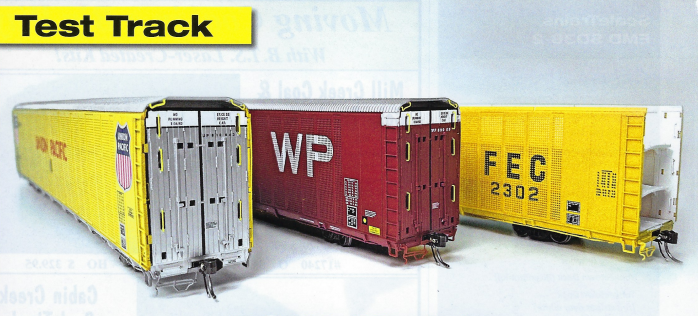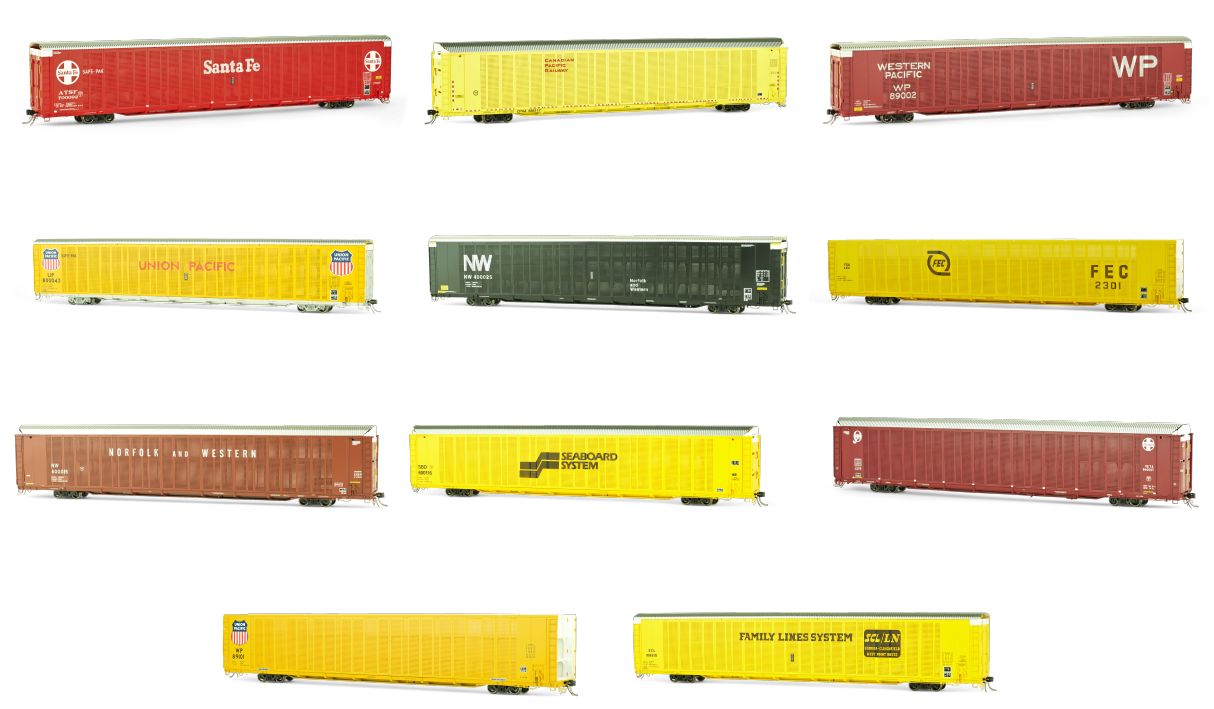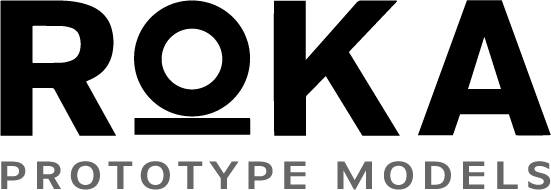
Railroad Model Craftsman Review: ROKA Models Whitehead & Kales Safe-Pak Auto Carrier
Share
Excerpt from April 2023 issue of Model Railroad Craftsman. Read issue for full article and images.
ROKA Models Whitehead & Kales Safe-Pak Auto Carrier
Harry K. Wong
"Not long after finished automobiles began to be transported in open carriers between assembly plants and distribution centers did the darker side of human nature and nature itself begin to take hold upon the freshly built vehicles riding out in the open air. Vandalism, parts theft, and foreign objects striking the glass and bodies took their toll upon this valuable cargo. In an effort to reduce the spiraling costs of damage claims and to restore shipper satisfaction, North American railroads came together with railcar builders and shippers to finally tackle this issue in the early 1970s. New enclosed designs began to emerge that would provide greater protection than the existing open auto rack cars which left the loads completely exposed to potential mayhem.
One of the earliest fully enclosed auto rack designs was designed by Whitehead & Kales in cooperation with Ford Motor Company, Detroit Toledo & Ironton, Louisville & Nashville, Norfolk & Western, Seaboard Coast Line, and Union Pacific. Dubbed initially as the "Snap-Pak," a pro-totype car was constructed as N&W 400000 in 1973. Wearing the logos of DT&I and N&W, this fully enclosed tri-level auto rack car underwent a year of testing and evaluation. With the data, refinements to the initial design were incorporated into the first production cars - now known as "Safe-Pak" enclosed auto carriers.
Between August of 197 4 and Spring 1975, 322 "Safe-Pak" cars were built for nine original owners, including Santa Fe, Canadian Pacific (CPAA), Clinchfield, Florida East Coast, N&W, SCL, Cotton Belt (SSW), Union Pacific and Western Pacific. Of these, Santa Fe operated the largest fleet with 160 cars, followed by CPAA with 59 examples, and Union Pacific with 45 cars.
Unlike later enclosed auto rack designs which used dozens of perforated corrugated unpainted aluminum side panels, SafePak cars featured totally smooth perforated sides that enabled the introduction of bright liveries and bold graphics.
The Model
As their first release, ROKA Models is now shipping finely detailed ready-to-run replicas of Safe-Pak auto racks for HO scale in multiple versions corresponding to different eras. ROKA offers five different body styles with multiple door, roof and deck configurations across this family of cars. Our examples of UP 800043 and WP 89009 represent Safe-Paks in their original form built as tri-levels with tri-fold end doors and a low-profile roof needed to successfully navigate tighter overhead clearances on most Eastern routes.
Out of the box, each of these big cars delivers a weighty, well-constructed feel in your hands. Holding the model up to the light reveals the semi-translucent appearance of the prototype Safe-Paks, even from some side angles. Most importantly, the cars track extremely well due to their low center of gravity as the entire bottom deck and underframe are of a single piece of cast metal with the exception of the outer layer of the center sill.
Separately applied ABD brake details, flexible plastic cut levers and a multi-wire rendition of the brake piping help to complete the basic appearance of the underframe. Everything above the bottom deck is of injection-molded styrene and solidly assembled. Despite initial impressions, the rungs on the vertical ladders at each corner of the car are actually separately applied and stand barely off of the surface. Removing the end doors can be accomplished gently for those who desire further customizing.
By the mid 1980s, many roads converted their Safe-Paks to bi-level cars by removing the roof, end doors and removing and rearranging the upper decks to allow for the transport of vans and pickups. FEC 2302 is a further permutation as an example of a Safe-Pak with its roof and ends removed, but retaining its tri-level deck layout. The lack of roof and ends on this car allows it to show off its fully painted white interior complete with tire guide rails, separate wire grab irons, prototypically correct convex-shaped upper decks and threaded rod deck adjustment hardware within. Paint coverage, separation and lettering was perfect across the three cars we reviewed.
On the scales, each Safe-Pak car weighs 7.8 ounces, with the roofless FEC car coming in a tad lighter at 7.4 ounces. Either way, the cars are either dead-on or just barely over the NMRA'.s weight recommendations for cars of this size. Each Safe-Pak rides on 28" insulated metal wheelsets mounted in low-profile truck side frames with rotating roller bearing details. All cars come equipped with Kadee # 148 metal couplers installed in fixed draft gear enclosures. The couplers were in full conformance against our coupler height gauge.
Conclusion
Enthusiasts of the 1990s to the present day are not left out, as ROKA also provides bi-level and tri-level Safe-Paks modernized with clamshell-style doors and a taller enclosed roof. These styles are also offered in this current run in several prototypical paint schemes. Given this first production of these W&K Safe-Pak auto carriers, modelers have much to look forward to from ROKA Models."
Excerpt from April 2023 issue of Model Railroad Craftsman. Read issue for full article and images.

